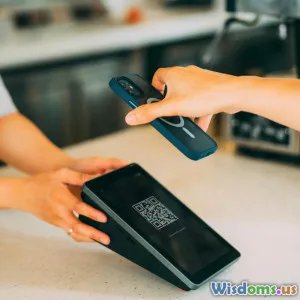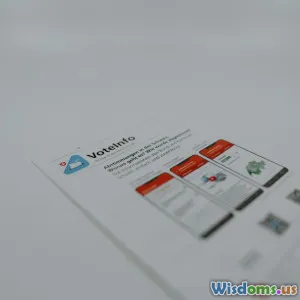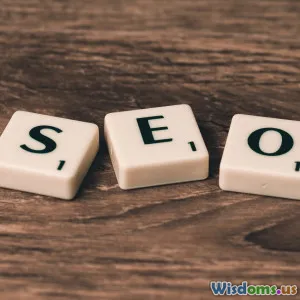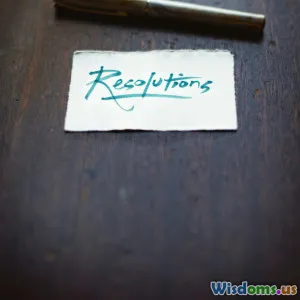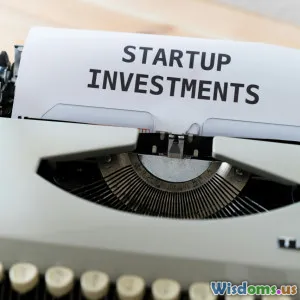
Seven Hidden Errors in Sales Funnels That Crush Startup Conversion Rates
8 min read Discover seven hidden sales funnel errors that silently devastate startup conversions and learn how to fix them for success. (0 Reviews)
Seven Hidden Errors in Sales Funnels That Crush Startup Conversion Rates
Startups are often fueled by bright ideas and passionate teams, but many stumble badly when it comes to converting prospects into paying customers. While it’s easy to blame the product or market fit, often the real culprit lies buried within the sales funnel itself. Sales funnels—by definition—should usher potential customers smoothly from awareness to purchase. Yet many startups unintentionally embed hidden errors that sabotage this progression, killing conversion rates before a deal is made.
In this article, we peel back the curtain on seven subtle but destructive mistakes commonly found in startup sales funnels. Beyond theory, you’ll find concrete examples, real-world data, and actionable advice to identify and fix these funnel flaws. By addressing these latent errors, startups can significantly boost conversion rates, maximize marketing efficiency, and pave a stronger path toward scaling.
1. Vague or Misleading Value Proposition
At the very top of the funnel, the value proposition is your first handshake with a prospect. Startups often err by using generic or overly complex messaging that fails to clearly communicate tangible benefits and differentiate from competitors.
Example: A SaaS startup offering team collaboration tools promoted "innovative solutions for enhanced productivity." This broad statement did not clarify how their tool was unique or valuable. Website visits surged, but conversions remained stubbornly low.
Impact: According to the Nielsen Norman Group, users leave in 10-20 seconds if a site lacks clear value messaging.
Solution: Craft value propositions addressing specific customer pain points with clear outcomes. Use concise language, quantifiable benefits, and customer-centric framing. For instance, "Cut your project meetings by 30% with our intuitive collaboration platform."
2. Inadequate Segmentation and Targeting
Startups sometimes funnel all leads into a single bucket without segmenting based on demographic, behavior, or buyer persona. This lack of segmentation results in irrelevant messaging and lower engagement.
Insight: HubSpot data reveals segmented email campaigns achieve 14.31% higher open rates and 100.95% higher click-through rates.
Real-World Tip: Segment leads by job role, industry, or buyer journey stage to tailor content, calls-to-action, and offers. For example, first-time visitors may receive educational materials, while returning users see demo invites.
3. Overcomplicated Funnel Stages
Startups occasionally design convoluted funnel processes with excessive steps, mandatory forms, or layered approvals that frustrate prospects.
Case Study: An e-commerce startup had a 7-step checkout featuring multiple upsells and mandatory account creation. Cart abandonment rates skyrocketed to over 75%, far above the 69.57% average cited by Baymard Institute.
Solution: Simplify. Limit form fields, reduce friction points, and allow guest checkouts where feasible. The fewer the hoops, the higher the likelihood of completion.
4. Poorly Timed or Ineffective Follow-Up
Failing to follow up with leads promptly and appropriately is a silent revenue killer. In fact, research from InsideSales.com shows an 80% drop in contact rates if sales reps wait more than 5 minutes to follow up.
Mistake: Startups often batch their outreach hours or days later, diminishing conversion probabilities.
Best Practice: Automate immediate, personalized responses post-lead capture and schedule timely follow-ups. Use lead scoring to prioritize hot prospects and customize communication frequency and content accordingly.
5. Not Addressing Objections Proactively
Unspoken or ignored objections during the funnel stages stall conversions. Customers hesitate if they don’t trust product efficacy, price fairness, security, or after-sales support.
Insight: 59% of people research online reviews before purchasing new products (BrightLocal).
Tactic: Anticipate objections by including transparent pricing, testimonials, FAQs, feature comparisons, and money-back guarantees within the funnel. Create trust anchors that reassure prospects and ease decision anxiety.
6. Neglecting Mobile Optimization
With mobile traffic accounting for more than half of web traffic globally (Statista), non-mobile-friendly funnels lose huge chunks of leads due to poor usability.
Impact Example: A survey found that a 1-second delay in mobile load time can reduce conversions by up to 20% (Google).
Fix: Ensure all funnel pages load rapidly, display cleanly on smartphones/tablets, and feature mobile-friendly forms and navigation. Test across multiple devices and browsers.
7. Relying on Vanity Metrics Over Actionable KPIs
Startups often track surface-level metrics like website visits or social media likes without focusing on meaningful conversion indicators like lead-to-customer rate, cost per acquisition, or lifetime value.
Quote: "You can't improve what you don’t measure." - Peter Drucker
Recommendation: Analyze funnel progression analytically. Use tools like Google Analytics, Mixpanel, or funnel visualization software to pinpoint drop-off points and optimize them iteratively.
Conclusion
Hidden errors in your startup’s sales funnel can silently erode the effort poured into customer acquisition. From vague messaging and poor targeting to funnel complexity and sloppy follow-up, each misstep depresses conversion rates and wastes precious budget.
The good news? These errors are identifiable and fixable with focused audit and strategic intervention. Start by revisiting and refining your value proposition, segment your audience carefully, simplify conversion paths, accelerate follow-ups, address objections upfront, optimize for mobile users, and measure with the right KPIs.
By illuminating these hidden pitfalls and taking decisive action, startups can unlock the true potential of their sales funnels—translating curiosity into committed customers, and ideas into revenue streams.
Remember, your funnel is not just a sequence of pages; it’s the lifeblood of your startup’s growth journey. Treat it with the care and precision that success demands.
Empower your startup funnel today. Identify these hidden errors and turn visitors into loyal customers.
Rate the Post
User Reviews
Popular Posts











